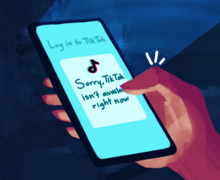After 30 years, college basketball lives and dies by the 3-pointer
Daily Orange File Photo
Trevor Cooney was one of the last players Syracuse had that fit the current trend of college basketball.
In April 1986, a black line was taped around each key of the Christian Brothers Academy basketball court for an under-19 AAU tournament. Any shot made from behind the lines, which were 20 feet, 8 inches from the basket, counted as three points.
A few months later, the 3-point arc was painted on the Carrier Dome court only few miles west of CBA. Syracuse head coach Jim Boeheim vehemently opposed it, just like fellow head coaches across the country who believed it would stretch the floor and turn the game into a shooting contest. Thirty years later, the line has ushered in a whole new style of basketball and changed the collegiate landscape.
This season marks the 30th anniversary of the 3-point shot’s debut in college basketball. A 19-foot, 9-inch arc was officially established for all schools at the start of the 1986-87 season, then was extended to 20 feet, 9 inches for the 2008-09 season. Basketball analysts say the shot has taken on new meaning in recent years because of several factors, not the least of which is the rise of the shot in the NBA. Many teams recruit for it. They practice it. And they live and die by it.
“It’s called the Golden State effect, man,” said ESPN analyst Jay Williams, the national college player of the year in 2002 at Duke who hit 39 percent of his career 3s. “When I work with kids, the first thing they do is start chucking 3s. The style in which the game is being played is you have the versatility of the power forwards and centers. You have bigs who want to shoot 3s, too.”
Three-point attempts rose each successive season between 1987 and 2008, when the line was moved back a foot. After a lull period, the number of 3s has exploded. During the 2013-14 season, teams took 32.9 percent of their shots from deep. It jumped to 34.2 percent in 2014-15, 35.4 percent in 2015-16 and 36.4 percent last season.

Daily Orange File Photo
Syracuse doesn’t rank within the top 50 in 3-point field goal attempts per game this season, though its next opponent, Colgate, does. While the Orange make just five 3s per game — tied-336th in the country — the Raiders average 11.3 3-point makes per game, 12th in the country. It is reflective of a wider trend rooted in AAU, high school and lower levels. A high school basketball team in Pine City, Minnesota, almost exclusively shoots 3-pointers and layups.
Both Williams and Jay Bilas, of ESPN, said players are spreading out the floor more over the past several years. There’s more of a premium on shooting in both recruitment and retainment of players because a 3-pointer is a higher-value shot than a regular basket. The most efficient shots on a basketball floor come at the free-throw line, via the layup or behind the arc, Bilas said. It’s a trickle-down effect from the NBA, whose teams, for the sixth consecutive year, took more 3-pointers than ever last season. Eleven years ago, no NBA team averaged more than 24 3-point attempts per game. Last season, 22 of 30 teams exceeded that mark.
The calculus teams are taking at both the pro and college level: 3s are worth more than 2s. Shooting 33 percent from 3 is equivalent to shooting 50 percent from inside the arc. Three-pointers are a quick way to generate points without having to chew the clock it takes for an open layup.
“When I was playing you never saw someone grab an offensive rebound and kick it out,” said Bilas, who played forward at Duke from 1982-86, the final seasons before the 3-point line was added. “Now they’re kicking it out for a step in 3. That’s the best 3 you get: after an offensive rebound. You get an offensive rebound, if you don’t have an immediate stick back, you look out, you get a shot that would take you 25 seconds of brilliant offense to get.”
In the shot’s inaugural season, Syracuse advanced to the national championships game but was beaten by the 3-point shooting of the Indiana Hoosiers. Keith Smart hit a midrange jumper to lift Indiana over Syracuse with five seconds on the clock. That shot wasn’t from behind the arc, but the Hoosiers were only in position to shoot a game-winner because Steve Alford had gone 7-for-10 from deep.
Syracuse’s lone national title, in 2003, could not have been won without freshmen Carmelo Anthony and Gerry McNamara. Now an assistant coach at SU, McNamara hit six consecutive 3-pointers in the title game — all in the first half. McNamara shot 35 percent from behind the arc his freshman season and Anthony, now an NBA star, shot 33.7 percent from 3.

Daily Orange File Photo
A year ago, graduate transfer Andrew White broke McNamara’s program single-season 3-point field goal record, knocking down 109. Syracuse’s 1987 Final Four run, the shot’s first season, was built on the shooting of Greg Monroe, a year during which the Orange shot a program record 40.3 percent from deep. Later, the 1995-96 run was powered by Marius Janulis and Todd Burgan’s abilities to spread the floor with the 3.
“It’s mandatory if you want to win big, you have to have shooters to get momentum with the 3 ball,” ESPN analyst Dick Vitale said. “That shot is momentum. It breaks up certain spurts on team. It’s tough to offset. The 3-point shot has become a weapon needed to really be a superteam.”
The Orange went 30-5 in 2009-10, when SU shot 39.1 percent from 3-point range. Brandon Triche, a starting guard on that team, said the 3-point shot has almost come to remove the midrange game. While he prefers the 17-footer, he said he knows teams are drawing up more plays specifically to generate an open 3-point shot. Triche said he has been taught throughout his career to run back to the paint on transition defense, a time when teams are most vulnerable to be hit by a 3.
“The 3-point shot is deadly,” said Triche, who drilled 173 3-pointers as a four-year starter at Syracuse from 2009-13. “It’s a shot in which you create a lot of points in a short amount of time. And it’s demoralizing. It’s hard if someone can dribble to take away the shot and drive and defend the 3. For the most part, you have to give up one.”
That is why teams are deciding to play small and spread the floor, Bilas said. Not every team can play 6-foot-11 centers, but many more teams can recruit and cultivate shooting talent. Against teams that play a zone or have a size advantage, both of which Syracuse has, teams try to compensate for lack of size or interior presence by shooting 3s, Williams said.
The balance of power in college basketball has transferred to those who can shoot the trifecta. The shot has redefined the identities of perennial powers and Cinderella teams alike. Analysts said it has made games faster-paced and brought fans out of their seats. It could phase out soon and big men could soon become the face of the game again, Williams said. But recent years show the 3-point shot has no end in sight.
“Teams always shoot a lot of 3s against us,” Boeheim said. “We like it when they shoot a lot, as long as they don’t make a lot.”
Published on December 7, 2017 at 9:29 pm
Contact Matthew: mguti100@syr.edu | @MatthewGut21





